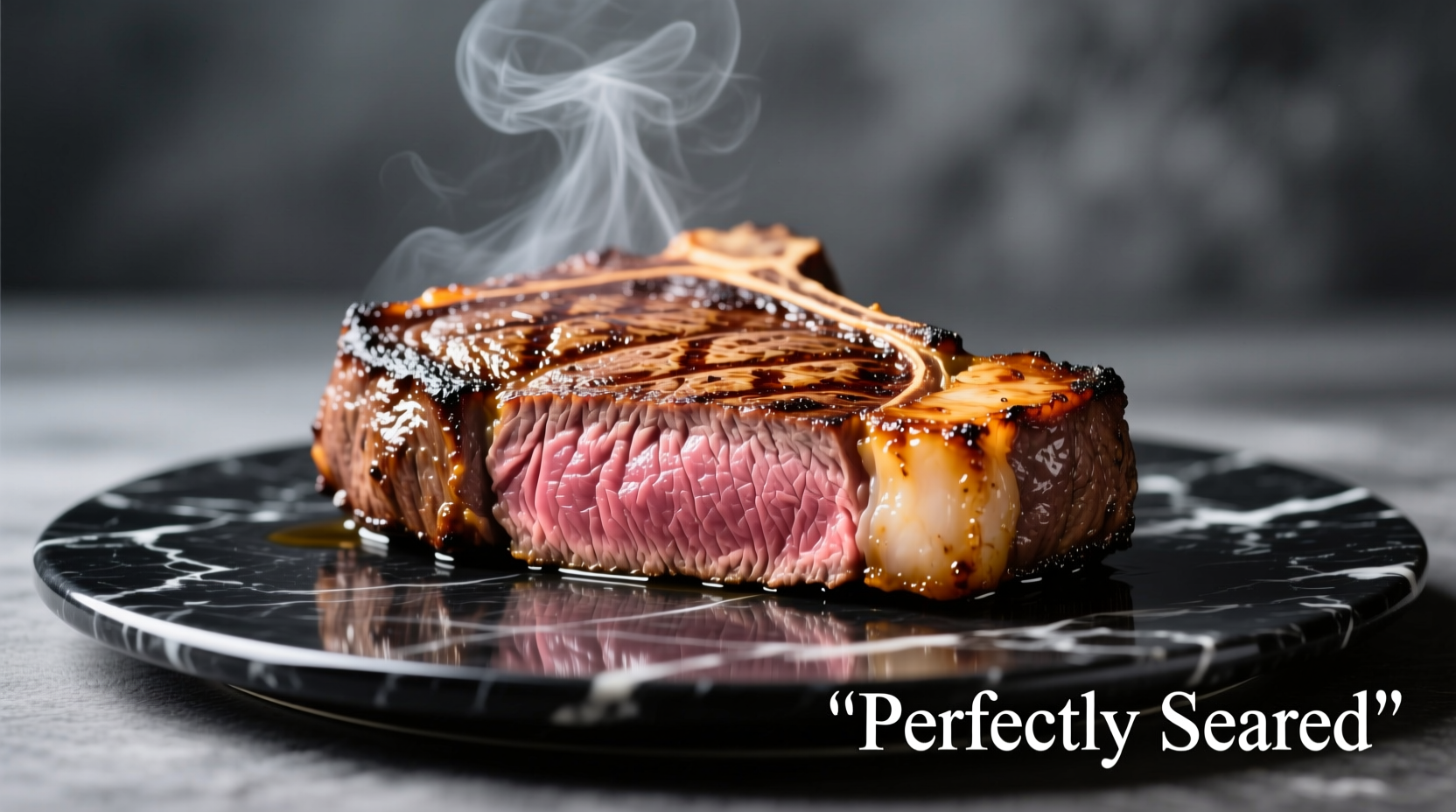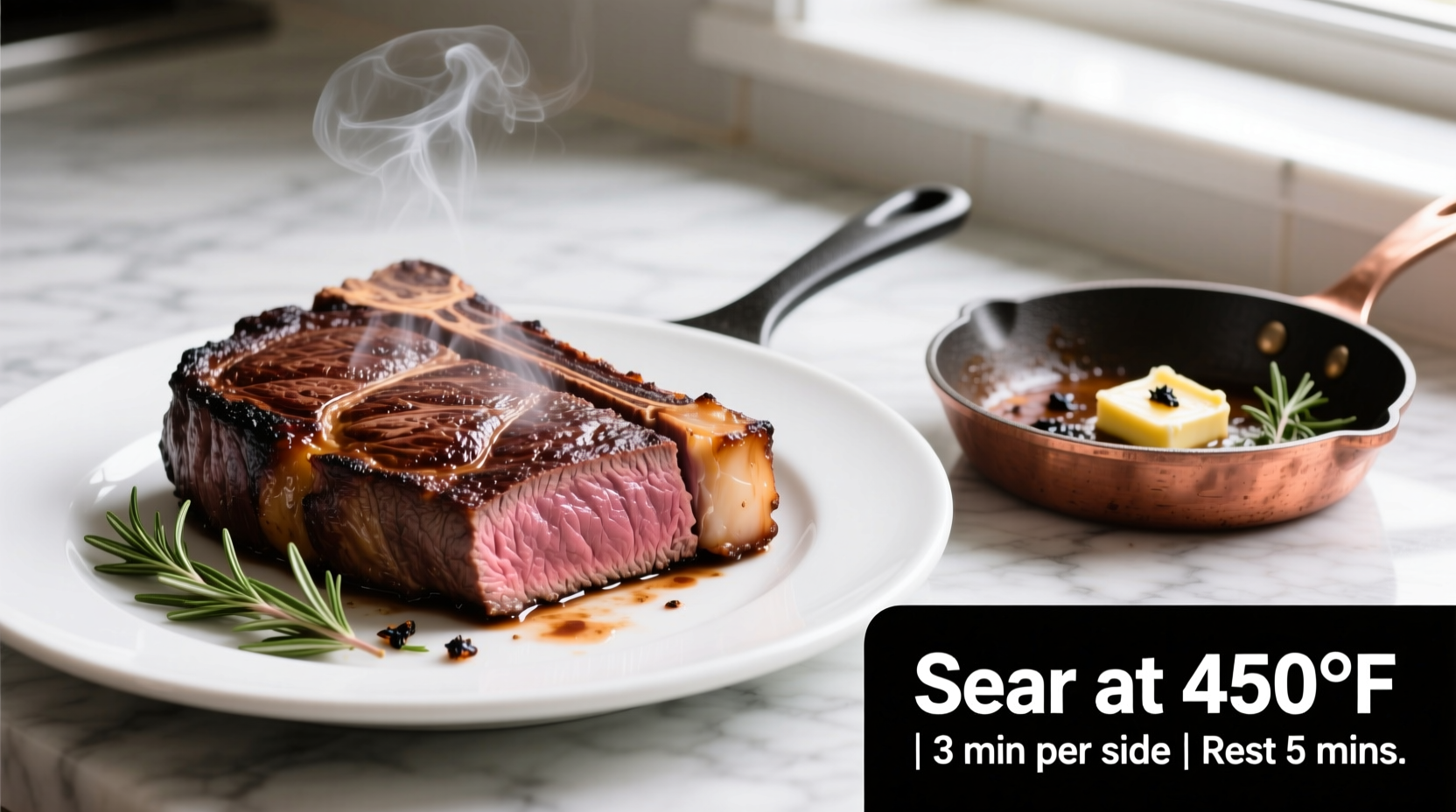The perfect skillet-cooked filet mignon requires a 1.5-2 inch thick cut brought to room temperature, generously seasoned with coarse salt and pepper, seared in a smoking hot cast-iron skillet for 3-4 minutes per side, then finished in a 400°F oven to reach 125-130°F internal temperature for medium-rare. Rest for 8-10 minutes before serving for maximum juiciness.
Mastering filet mignon in a skillet transforms an expensive cut into a restaurant-quality meal you can prepare at home. This guide delivers precise techniques professional chefs use to achieve perfect doneness every time, avoiding common pitfalls that turn premium beef into disappointment. You'll learn exactly how to select, prepare, and cook filet mignon using just a skillet and oven for results that rival steakhouse perfection.
Why Skillet Cooking Works Best for Filet Mignon
Filet mignon's delicate marbling requires precise temperature control that skillet cooking provides. Unlike grill cooking where heat fluctuates, a preheated cast-iron skillet creates the intense, consistent heat needed for the Maillard reaction—the chemical process that develops complex flavors while forming that coveted crust. According to the USDA Food Safety and Inspection Service, achieving proper surface browning also helps eliminate surface bacteria while preserving interior moisture.
| Doneness Level | Internal Temperature | Visual & Texture Cues |
|---|---|---|
| Rare | 120-125°F | Very soft, bright red center |
| Medium-Rare | 125-130°F | Soft center, warm red |
| Medium | 135-140°F | Springy texture, pink center |
| Medium-Well | 145-150°F | Firm texture, slight pink |
| Well-Done | 155°F+ | Very firm, little to no pink |
Essential Tools for Perfect Skillet Filet Mignon
While you can cook filet mignon in any skillet, professional results require specific equipment:
- Cast-iron skillet - Retains heat better than stainless steel for consistent searing
- Instant-read thermometer - Critical for precision (Thermapen recommended)
- Heavy tongs - For flipping without piercing the meat
- Rack and baking sheet - For resting after cooking

Selecting the Ideal Filet Mignon
Not all filet mignon cuts deliver the same results. Look for:
- Thickness - Minimum 1.5 inches (thicker cuts allow better control over doneness)
- Color - Bright cherry red (avoid brown or dull appearance)
- Marrow exposure - Small central hole indicates proper tenderloin section
- Marbling - Minimal but present (filet has less fat than ribeye)
According to culinary research from the American Culinary Federation, USDA Prime grade provides noticeably better results than Choice for this lean cut due to slightly increased marbling.
Preparation: The Critical 60 Minutes Before Cooking
Proper preparation separates good steak from exceptional steak:
- Remove from refrigerator 60 minutes before cooking
- Dry thoroughly with paper towels (moisture prevents proper searing)
- Season generously with coarse kosher salt and freshly ground pepper
- Optional enhancement: Rub with 1 tsp neutral oil (avocado or grapeseed)
This resting period allows the meat to reach even temperature throughout, preventing the common mistake of a cold center with overcooked exterior.
Searing and Finishing: The Two-Stage Cooking Process
Filet mignon requires both stovetop searing and oven finishing for perfect results:
Stage 1: The Critical Sear (3-4 minutes)
- Preheat cast-iron skillet over medium-high heat for 5 minutes until smoking
- Add 1 tbsp high-smoke point oil (avocado or grapeseed)
- Place filet in skillet away from you to avoid oil splatter
- Press gently for 10 seconds to ensure full contact
- Cook undisturbed for 3-4 minutes until deep golden crust forms
- Flip and sear second side for 3-4 minutes
Stage 2: Precision Oven Finish (4-8 minutes)
- Transfer skillet directly to 400°F preheated oven
- Cook until reaching target internal temperature (use thermometer!)
- For medium-rare (125-130°F), this typically takes 4-8 minutes depending on thickness
- Optional: Add 2 tbsp butter, garlic, and herbs during last 2 minutes
Resting: The Non-Negotiable Final Step
Resting allows juices to redistribute through the meat. Skipping this step causes precious juices to spill out when cut. Place steak on wire rack and tent loosely with foil for 8-10 minutes. During this time, the internal temperature will continue rising 5-10°F (carryover cooking).
Common Mistakes That Ruin Filet Mignon
Avoid these frequent errors that turn premium beef into disappointment:
- Cooking straight from refrigerator - Creates uneven doneness
- Overcrowding the skillet - Lowers temperature and steams instead of sears
- Flipping too frequently - Prevents proper crust formation
- Cutting immediately - Releases all juices onto the plate
- Guessing doneness - Always use a thermometer for precision
When Skillet Cooking Isn't Ideal: Context Boundaries
While skillet cooking works perfectly for standard 1.5-2 inch filets, certain situations require alternative approaches:
- Very thick cuts (3+ inches) - Reverse sear method produces more even results
- Thin filets (under 1 inch) - Cook entirely on stovetop to prevent overcooking
- No oven available - Lower heat after searing and cover skillet for controlled finish
- Outdoor cooking - Grill provides similar results with added smoky flavor
Troubleshooting Guide
Solve common issues with these professional fixes:
- Problem: Steak sticking to pan - Solution: Ensure proper preheating and avoid moving during initial sear
- Problem: Uneven browning - Solution: Rotate steak 90 degrees halfway through each side for crosshatch pattern
- Problem: Excessive smoke - Solution: Use high-smoke point oil and ensure proper ventilation
- Problem: Overcooked exterior - Solution: Lower heat slightly and extend oven time
Perfect Pairings for Skillet Filet Mignon
Complete your meal with these classic accompaniments that complement without overwhelming:
- Sauces - Red wine reduction, béarnaise, or simple garlic butter
- Sides - Roasted asparagus, truffle mashed potatoes, or creamed spinach
- Wine - Cabernet Sauvignon or Pinot Noir for red meat pairing
Frequently Asked Questions
How long should filet mignon rest after cooking?
Filet mignon should rest for 8-10 minutes, covered loosely with foil. This allows juices to redistribute throughout the meat. Cutting too soon releases precious juices onto the plate rather than staying in the steak.
Can I cook frozen filet mignon in a skillet?
While possible, cooking frozen filet mignon produces inferior results. Thaw completely in the refrigerator for 24 hours before cooking. Frozen steak creates excess moisture that prevents proper searing and leads to uneven cooking.
Why is my filet mignon tough despite proper cooking?
Tough filet mignon usually results from overcooking or insufficient resting. Filet mignon is extremely lean and becomes tough when cooked beyond medium. Always use a thermometer and rest properly. Also check if your cut came from the tapering end of the tenderloin, which is naturally tougher.
Should I oil the steak or the skillet?
Oil the skillet, not the steak. A thin layer of high-smoke point oil in the preheated skillet creates the perfect searing environment. Oiling the steak can cause flare-ups and uneven browning. Pat the steak completely dry before placing in the oiled skillet for maximum crust development.











 浙公网安备
33010002000092号
浙公网安备
33010002000092号 浙B2-20120091-4
浙B2-20120091-4